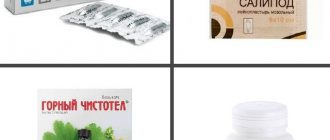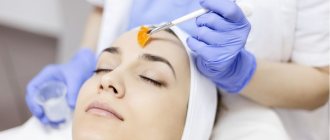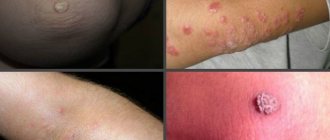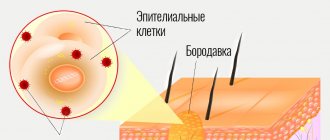A wart is a benign neoplasm on the skin, which most often causes psychological discomfort and self-doubt. However, this is not only a cosmetic defect. A wart is a consequence of decreased immunity, mental trauma and hypertension, and is also a source of the human papillomavirus. That is why experts recommend removing tumors whenever possible. Currently, methods of cryodestruction, surgical, radio wave and laser removal of warts are used. Each of them has advantages, which are the focus of this article.
Wart removal methods
Warts are neoplasms that in most cases do not harm the human body, but affect its aesthetics. Their size can vary from 1 mm to 1 cm. The larger they become, the more discomfort they cause. Currently, there are many proven and safe methods for removing warts that allow you to get rid of a cosmetic defect. Among them:
- Radio wave method. Here, the growth is exposed to high-frequency radio waves, which contributes to the destruction and killing of pathological cells. Despite its high efficiency, the method has one drawback: after the manipulation, a blister remains, the healing of which takes a lot of time.
- Cryodestruction. The method involves exposing the neoplasm to liquid nitrogen. In the process, an epithelial bubble is formed, which causes pain. The wart dies along with the blister, and after it is rejected by the body, the treated area is overgrown with healthy young skin.
- Ultrasonic method. In its effect, this technique is similar to the radio wave method, only here the radio waves are replaced by high-frequency sound. This method is considered one of the most effective and painless.
- Surgical method. One of the most radical techniques is used only in emergency situations. These include the process of degeneration of a wart into melanoma or the beginning of the death of surrounding tissues.
- Laser method. The technique is based on laser exposure. This is the most modern technology, after which only a small scar or shallow hole remains, healing within several months.
Possible complications
In rare cases, when burning warts, undesirable consequences may occur:
- The formation of a keloid scar due to the individual characteristics of the skin.
- The appearance of a scar when a tumor with deep roots is removed using a laser. These growths have bases that penetrate deeply into the skin.
- The presence of blisters that do not heal for a long time on the surface of the wart.
- Allergic reactions.
To avoid these consequences, you need to properly prepare for cauterization and follow all doctor’s instructions after the procedure.
Radio wave removal of warts
The technology gives the surgeon the opportunity to cut out the tumor literally “at the root.” It is used to remove the following types of warts:
- flat,
- plantar,
- speakers.
- hanging.
In addition, the method is suitable for removing genital warts. The procedure itself takes 10-20 minutes and is almost bloodless. To numb the area being treated, the doctor uses local injection anesthesia or a superficial application of a special cream. To remove the growth, a specialized device is used - Surgitron, also known as a radio knife. It has a gentle effect on the problem area of the skin without affecting healthy tissue, without irritating nerves or causing muscle contractions.
The main advantage of the radio wave method is minimal trauma, since radio waves practically do not affect surrounding tissues. The risk of inflammation and complications is also minimal.
Aftercare
After burning off a wart, you need to properly care for your skin:
- Apply moisturizer.
- Do not use decorative cosmetics during the recovery period.
- Avoid exposure to direct sunlight.
- Get checked by a doctor once a week.
Scarring
When burning warts, in some cases complications occur, including scars. The skin of the face is thin and delicate; to remove growths on it, you should carefully choose methods and medications. If the papilloma is successfully removed, the skin will completely recover in 1-2 weeks.
Help with regeneration
In order for skin restoration after removal of growths to be successful, it is recommended to take medications such as immunostimulants and immunomodulators during the postoperative period. Otherwise, relapse, inflammation or suppuration of the wound may occur due to weakened immunity.
Removal of warts by cryodestruction (liquid nitrogen)
Cryodestruction is a modern method of treating superficial benign neoplasms, in which pathological tissues are first cooled to an extremely low temperature and then destroyed. Liquid nitrogen is used as the active substance. It is under its influence that benign growths die, and cells with a disturbed structure slow down their growth.
Cryodestruction of warts and other neoplasms includes the following stages:
- Exposure to liquid nitrogen. The doctor's main instrument is a wooden stick with cotton wool or gauze wound at one end. With its help, liquid nitrogen is removed from the container and applied to the growth. After this, the doctor presses the stick onto the wart and holds it for 5-30 seconds.
- Break for 1-2 minutes. A pause is needed to assess the effectiveness of the impact. First, the skin turns white, then thaws, which allows the doctor to determine the magnitude and depth of exposure to the substance. Based on this, he decides whether to repeat the procedure or not.
- Result. After all exposures, the skin becomes whitish-pink, which indicates the complete killing of pathological cells.
The next day after the procedure, a bubble filled with colorless or reddish liquid appears on the treated area. The color of the liquid is affected by the depth of exposure. The blister cannot be covered with adhesive tape. If necessary, it can be covered with a gauze napkin, and then secured with an adhesive plaster. During water procedures, it is important to maintain the integrity of the bladder. If the treated area causes pain, you may take a painkiller.
Sometimes warts do not respond immediately to liquid nitrogen. Therefore, if necessary, 3 weeks after the first correction, the doctor repeats the procedure. Usually two sessions are enough.
Bibliography:
1) Cockayne S, Hewitt C, Hicks K, Jayakody S, Kang'ombe AR, Stamuli E, Turner G, Thomas K, Curran M, Denby G, Hashmi F, McIntosh C, McLarnon N, Torgerson D, Watt I; EVerT Team. Cryotherapy versus salicylic acid for the treatment of plantar warts (verrucae): a randomized controlled trial. BMJ. 2011 Jun 7; 342:d3271. doi: 10.1136/bmj.d3271.
2) Dall'oglio F, D'Amico V, Nasca MR, Micali G. Treatment of cutaneous warts: an evidence-based review. Am J Clin Dermatol. 2012 Apr 1; 13(2): 73-96. doi: 10.2165/11594610-000000000-00000.
3) Nguyen NV, Burkhart CG. Cryosurgical treatment of warts: dimethyl ether and propane versus liquid nitrogen – case report and review of the literature. J Drugs Dermatol. Oct 2011; 10(10): 1174-6.
4) Ahn CS, Huang WW. Imiquimod in the treatment of cutaneous warts: an evidence-based review. Am J Clin Dermatol. 2014 Oct; 15(5): 387-99. doi:10.1007/s40257-014-0093-5.
Comparison of wart removal methods: laser and nitrogen
Most patients are interested in which of the listed methods is most effective. Most often they choose between laser and liquid nitrogen. Each of these technologies has its own advantages. For a laser it is:
- high efficiency,
- speed,
- painlessness,
- no postoperative bleeding.
In addition, the laser allows the surgeon to act in a targeted manner, avoiding nearby healthy tissue. At the same time, he directs a heat beam at the wart, which evaporates the moisture contained in the growth and destroys its structure. Due to the lack of contact with the skin, wound infection during the procedure is completely excluded.
When choosing cryodestruction technology, you should be prepared for the fact that 3-5 procedures will be required to completely remove the tumor. This is due to the fact that the method involves layer-by-layer exposure of pathological tissues to low temperature. If the growth is small, then one treatment is sufficient to freeze and kill it.
Another selection criterion is the cost of therapy. Removing papilloma using cryodestruction is relatively cheap, but the more procedures are required, the more expensive such treatment will ultimately cost. In addition, when exposed to liquid nitrogen, there is a small risk of damage to healthy tissue, and hence the appearance of a scar.
Only a doctor can determine which of the listed methods will be most effective. But to come to a final decision, he must collect anamnesis, conduct an examination of the patient and send pathological tissues for histology.
Rating of the best medications
Gepon
An effective product that contains a synthetic peptide consisting of 14 different amino acids. The main effect is inhibition of papilloma virus replication. Signs of inflammation decrease two days after the start of the course, which is a positive result.
The average cost is 180 rubles.
Gepon
Advantages:
- Good quality;
- Quick elimination of traces of inflammation;
- Convenient use;
- A short course.
Flaws:
- Not found.
Isoprinosine
A high-quality medicine designed to quickly eliminate the papilloma virus. After entering the body, the active substance immediately attacks the strain and blocks further replication of the virus. In addition, the medication increases the concentration of immunoglobulin G and helps restore normal human immunity.
Sold at a price: from 599 rubles.
Isoprinosine
Advantages:
- Performance;
- Good composition;
- Virtually no side effects;
- A short course of admission.
Flaws:
- Not found.
Groprinosin
A quality product that has the active component of the previous medicine, but this one has a simpler formula. Often such tablets are prescribed not to adults, but to children and the elderly. The active substance destroys viral cells, while restoring the immune system.
The average price is 450 rubles.
Groprinosin
Advantages:
- Suitable for children and elderly;
- Rapid restoration of immunity;
- Good composition;
- Efficiency.
Flaws:
- Not found.
Remantadine
A high-quality medicine that instantly destroys the protective shell of the virus. The product is prescribed as a prophylactic agent after surgery. In addition, it is suitable for use after contact with an infected person.
There are side effects, but they are rare, which is an advantage. The only contraindication is that it is not intended for use by pregnant and nursing mothers.
Sold at a price: from 50 rubles.
Remantadine
Advantages:
- Quick effect;
- A short course of treatment;
- Side effects are rare;
- Low cost.
Flaws:
- Not found.
Lycopid
A safe drug that is used for complex therapy in the event of secondary immunodeficiency. After entering the body, the active substance begins to actively stimulate immune cells. Thanks to this, they produce antibodies that subsequently attack the papilloma virus.
The medication can be used with semi-synthetic penicillins and similar antiviral drugs. However, it should not be used in conjunction with tetracycline drugs, as this will not bring any benefit to the body. There are no contraindications for use. After absorption by the body, the active components are safely excreted through the kidneys.
Sold at a price: from 268 rubles.
Lycopid
Advantages:
- Efficiency;
- Safety;
- Stimulates the immune system;
- Can be prescribed to pregnant women.
Flaws:
- Not found.
Galavit
The main purpose of the drug is to increase the metabolic activity of immune cells. In addition, the drug stops the formation of cytokines and also corrects the function of macrophages. The product is indispensable for infection and development of the papilloma virus. After entering the body, it increases resistance to the viral agent.
Prescribed for adults and children over 12 years of age. Pregnant and nursing mothers are prohibited from using the medicine.
Sold at price: 525 rubles.
Galavit
Advantages:
- Quickly affects infected cells:
- A short course of treatment;
- Relative safety;
- There are no significant side effects.
Flaws:
- Not detected.
Surgical removal of warts
Plantar warts are most often removed surgically. As a rule, they are a benign neoplasm, saturated with blood vessels. In its structure, such a growth usually resembles cauliflower. Sometimes it can grow into the skin, causing pain when walking and rubbing against shoes. Plantar warts most often become a source of spread of the human papillomavirus.
The surgical method is used only if conservative therapy is ineffective. First, the doctor takes a test for histology and gives a tetanus vaccination. The operation itself includes the following steps:
- Treating the sole with soapy water.
- Separation of the hyperkeratosis covering the wart in order to determine its contours.
- Skin treatment with povidone-iodine.
- Local anesthesia with mepivacaine (2%) or another drug without the use of vasoconstrictors.
- Light massage with gauze to quickly spread the anesthetic.
- A skin incision and complete excision of the pathological growth.
- Cleaning the cut area using a Jansen spoon.
- After stopping the bleeding, clean the wound with saline solution.
- Treatment of the area with povidone-iodine, followed by application of a bandage.
After the procedure, the patient should try to keep the operated limb in an elevated position. Relative rest is recommended for 48 hours after surgery. During this time, it is necessary to avoid open sources of heat and, if necessary, take painkillers.
After 48 hours, the first dressing is done, during which the dried blood is removed with a scalpel, and the wound is washed with saline solution under pressure. After this, an enzymatic ointment is applied to the treated area, which is covered with polyethylene on top. Using shoes with an orthopedic insole, the patient can already lean slightly on the operated leg.
Human papillomavirus
This is one of the most common viruses on Earth. Infection can occur in several ways:
- contact and household (through touch);
- sexual (genital, anal, oral-genital);
- in childbirth from mother to child.
The period of development of the disease ranges from several weeks to tens of years, this is explained by the fact that the virus may not manifest itself for a long time, but as soon as the immunity becomes a little weaker, growths immediately appear on the skin and/or mucous membranes. The main danger of this disease is that certain types of HPV are highly likely to cause the formation of a malignant tumor (cancer of the skin or mucous membranes). To make sure that the disease will not lead to the formation of a tumor, it is necessary to undergo examination by a doctor and not self-medicate.










